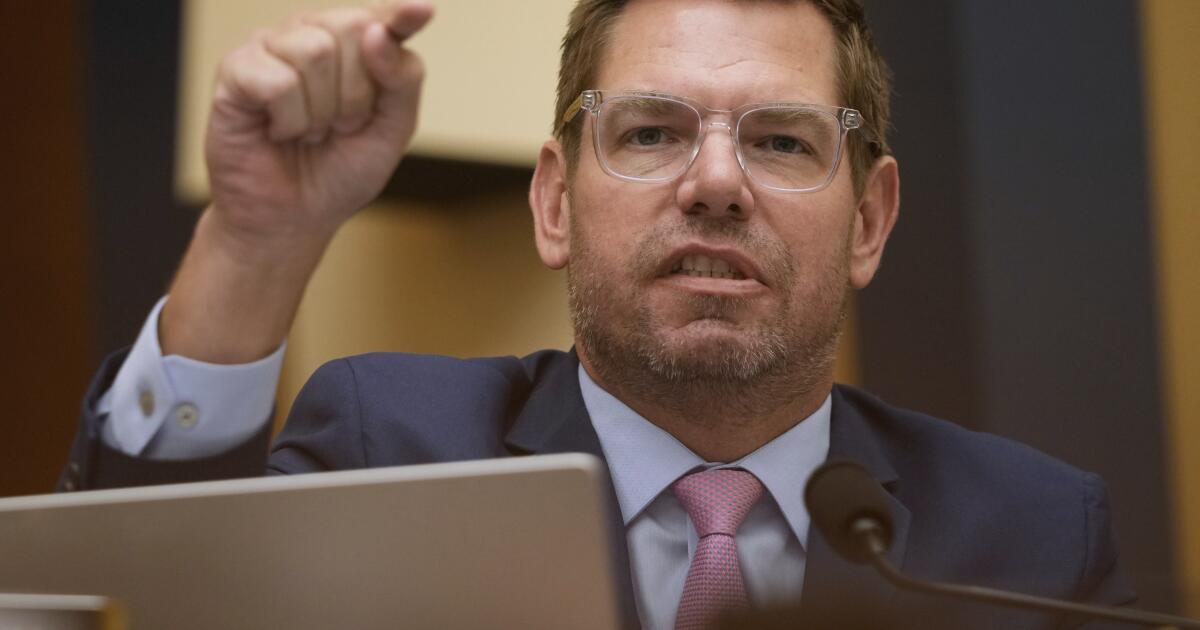Crypto
South Florida artists and entrepreneurs find new opportunities in the crypto world

As economic uncertainty pushes many to seek new ways to grow their income, a growing number of Miami residents are turning to cryptocurrency.
For some, it’s not just an investment — it’s a life-changing opportunity.
NFTs open doors for Miami artist
Miami illustrator and muralist Marlon Pruz told CBS News Miami he has struck gold in the crypto world by selling what’s known as NFTs, or non-fungible tokens. An NFT is a digital asset that signifies ownership of a digital item. For Pruz, it’s his ticket to sell his digital art pieces.
“This artist Beepull sold one of his NFTs for $69 million and that’s what really opened up a lot of people’s eyes,” said Pruz.
Cryptocurrency’s appeal grows
Miami has emerged as a hub for digital asset enthusiasts. Crypto consultant Danny Brownwolf told CBS News Miami her journey into the crypto world began while working in international policy back in 2017.
At the time, the United Nations launched a pilot project using the technology to track humanitarian aid distribution, and it captivated her interest.
“I was like, what is this magical technology they are using to solve a real-world problem and I dug in and I just went down the rabbit hole ever since,” said Brownwolf.
Fast transactions, no middleman
Brownwolf demonstrated just how swiftly she could send cryptocurrency using the platform X. In mere moments, she sent $1 in cryptocurrency through the platform and it automatically opened a digital wallet containing the funds.
“You can say that crypto is any asset represented in a digital way native to the internet, that allows for no middleman,” said Brownwolf.
Unlike traditional currencies regulated by central banks, cryptocurrencies are decentralized and operate on a technology called blockchain. This means that transactions are verified by a network of computers rather than a single entity.
New laws and growing mainstream use
Brownwolf recently guided start-up advisor and investor Ethan Appleby through the crypto onboarding process at the Lab Miami in Wynwood, a gathering place for tech pioneers and entrepreneurs.
“You’re officially on chain,” exclaimed Brownwolf.
“Thank you so much. Amazing!” replied Appleby.
Recently, the GENIUS Act was signed into law, marking a significant milestone in the regulation of digital assets nationwide.
“It allows for the U.S. dollar to be issued as a crypto. So, now you have, think of cash, it has the same properties of cash. It’s backed one-to-one either by a real U.S. dollar or by U.S. bonds,” said Brownwolf.
Advice for beginners
For beginners, Brownwolf recommends starting with platforms that are user-friendly for those new to cryptocurrency. Some of them include Robinhood, Coinbase, Gemini and Kraken.
So, how is your money protected from hackers?
“Once you have money in any type of digital form, then you need to protect your password, your access and best practices like two-factor authentication,” said Brownwolf.
A steep learning curve
For Pruz, joining the crypto craze has been transformative. “I keep telling my friends you need to get into this. You need to take the deep dive,” he said.
Pruz said it took him nearly two years to truly grasp the process and start seeing significant profits. Brownwolf added that for everyday people deciding what to invest in, it’s important to “look for things that solve problems in the current industry you work in or in a field or industry that you are knowledgeable about.”

Crypto
Turkmenistan Set To Welcome Cryptocurrency Operations From 2026 – Details

Digital asset adoption continues to grow after Turkmenistan announced plans to legally accommodate cryptocurrency operations from 2026. Following this move, the Central Asian nation joins the expanding list of countries opting for regulation in the crypto industry against an outright ban.
Turkmenistan Explores Crypto Amid Economy Diversification
On Friday, Reuters reported that President Serdar Berdymukhamedov of Turkmenistan signed a new law that will permit registration of crypto exchanges and crypto mining companies from January 1, 2026.
Notably, this development appears to represent part of the state government’s recent efforts to diversify its economy beyond gas exports, following Turkmenistan’s status as the nation with fourth fourth-largest gas reserves. Reuters also confirmed the government’s motive behind its new regulation, stating an intent to drive investment and speed up digitalization.
While there are no official data on the level of crypto ownership in Turkmenistan, citizens’ ability to purchase digital assets using credit/debit cards, as well as the existence of Bitcoin ATMs, indicate significant traction requiring legalization. In particular, local Kyrgyzstan media states the new regulations signed by President Berdymukhamedov assert the legal status of cryptocurrencies as civil assets but with no economic power to serve as currency or means of payment.
Furthermore, all licensed crypto exchanges are mandated to ensure the protection of users’ data and deposits. Meanwhile, mining operations can be performed by both individuals and local businesses following approval and registration with the recognized state authority. Other aspects of Turkmenistan’s crypto regime cover specific definitions of terms, and operations center around offering, transfer, issuance, and storage.
Crypto Adoption Surges In Central Asia
Beyond Turkmenistan, other nations in Central Asia, including Kazakhstan and Uzbekistan, are also ramping up crypto regulatory efforts to create an enabling environment for digital assets adoption. Notably, Uzbekistan has completed legal preparations to formally adopt stablecoins for payments in 2026, while also permitting the trading of tokenized stocks on licensed exchanges.
Meanwhile, Bitcoinist reported that Kazakhstan has recently allocated $500 million – $1 billion for a national reserve fund with a potential launch slated for 2026. In addition, the former soviet state also introduced a national stablecoin, KZTx, in collaboration with the world’s biggest exchange, Binance.
Taken together, these crypto-friendly moves show that Central Asian nations are doubling down on blockchain and digital assets as an emerging pillar of the global financial sector.
According to data from CoinMarketCap, the total crypto market cap is now valued at $3.05 trillion following a modest rebound in the last week after an extended correction that began in early October.
Featured image from Reuters, chart from Tradingview
Editorial Process for bitcoinist is centered on delivering thoroughly researched, accurate, and unbiased content. We uphold strict sourcing standards, and each page undergoes diligent review by our team of top technology experts and seasoned editors. This process ensures the integrity, relevance, and value of our content for our readers.
Crypto
Binance Joins EU Agencies in Major Crackdown on Crypto-Fueled Digital Piracy Networks

Crypto
Cryptocurrency Exchanges Brace for Japan’s New Regulations

Circle Internet Group Inc. stocks have been trading up by 11.22 percent driven by anticipated strategic partnership announcements.
Key Takeaways
- Japan’s financial watchdog aims to enforce new regulations requiring cryptocurrency exchanges, including Circle Internet, to set aside reserves against liabilities.
- Circle Internet (CRCL) will disclose its earnings report soon; the anticipated earnings consensus is 18 cents per share.
- These developments come amid turbulent times in the crypto and tech spheres, with CRCL amongst companies preparing for potential impacts.
Live Update At 12:14:02 EST: On Friday, November 28, 2025 Circle Internet Group Inc. stock [NYSE: CRCL] is trending up by 11.22%! Discover the key drivers behind this movement as well as our expert analysis in the detailed breakdown below.
Quick Financial Overview
Circle Internet, represented by the ticker CRCL, is gearing up for its upcoming earnings announcement. Historically, the company’s financial landscape is marked with ups and downs; notable profit margins are missing, casting uncertainties. Nonetheless, a fresh earnings report might bring rays of hope.
In the recent market, highlights showcase a price range progression with notable volatility—opening at $75.31 and climbing to an admirable $81.48 before settling around $80.8. This showcases the company’s resilience amidst challenges but also hints at possible fluctuations ahead.
Analyzing the financial statements shows that CRCL has key concerns in its profitability ratios. For instance, the company has negative figures in its pre-tax profit and operating margins, revealing the fiscal adversities it grapples with. The gross margin, however, remains robust at 79.4%, signaling efficient production. Despite this upside, its quick liquidity ratios, like the current ratio being 1, indicate limited room to maneuver in crises, necessitating strategic agility in the face of unpredictable economic climates.
Regulatory Changes and Market Dynamics
Japan’s decision to compel cryptocurrency exchanges to hold reserves as a safeguard has undeniably put a spotlight on Circle Internet. This proactive move highlights regulatory bodies recognizing potential risks within the burgeoning world of cryptocurrencies. It is a move that aims to preempt vulnerabilities in the sector, ensuring investor protection and curbing unforeseen financial fallouts, especially in hack-prone digital worlds.
For Circle Internet and other affected companies, this is a time for strategic readjustments and protective measures. The market, already sensitive to any regulatory changes, might oscillate between optimism and caution as this unfolds. CRCL stocks need a careful watch as investor sentiment may shift dramatically based on compliance costs and operational changes that might arise post this regulation.
Discussing the speculative impact of this move requires understanding the swimming tides in financial reservoirs in CRCL’s favor or against it. As news spreads, investor trust in CRCL’s crisis management and innovation capabilities will prove critical.
The Road Ahead
Navigating these new waters, CRCL stands at a critical juncture where trader confidence lies heavily tethered to regulatory compliances and earnings outcomes. As the threads connecting cryptocurrency operations to broader financial safety tighten, adopting proactive strategies and mitigating transactional risks while aligning with regulatory standards becomes indispensable. As Tim Bohen, lead trainer with StocksToTrade says, “I never chase price. The best opportunities allow me to enter on my terms, not when I’m feeling pressured.” This sentiment resonates with the current climate where strategic patience is invaluable.
Circle Internet’s forthcoming earnings announcement is poised either as a reassurance or an escalation point dependent on performance metrics vis-à-vis expectations. News on recent financial commitments will unveil glimpses into upcoming strategic expansions or contractions, bearing a profound influence on market dynamics.
In conclusion, CRCL’s journey ahead is layered with complexities. The aggregation of regulatory actions and corporate disclosures during this defining window will unfurl a robust picture, constraints, and opportunities alike. How Circle Internet maneuvers these nuances will certainly delineate its trajectory and its stakeholder’s fortunes related to it.
This is stock news, not investment advice. StocksToTrade News delivers real-time stock market updates tailored to highlight the key catalysts driving short-term price movements. Our coverage is designed for active traders and investors who thrive in fast-moving markets, with a focus on volatile sectors like penny stocks, AI stocks, Robinhood stocks and other momentum plays. From earnings reports and FDA approvals to mergers, new contracts, and unusual trading volume, we break down the events that can spark significant price action.
Looking to level up your trading game? Explore StocksToTrade, the ultimate platform for traders. With powerful tools designed for swing and day trading, integrated news scanning, and even social media monitoring, StocksToTrade keeps you one step ahead.
Check out our quick startup guide for new traders!
Ready to build your watchlists? Check out these curated lists:
Once your watchlist is set, take the next step and trade with confidence using StocksToTrade’s robust platform. Don’t miss out — grab your 14-day trial for just $7 and experience the edge you need to thrive in today’s fast-paced markets.
-

 Science1 week ago
Science1 week agoWashington state resident dies of new H5N5 form of bird flu
-

 Business5 days ago
Business5 days agoStruggling Six Flags names new CEO. What does that mean for Knott’s and Magic Mountain?
-

 Politics3 days ago
Politics3 days agoRep. Swalwell’s suit alleges abuse of power, adds to scrutiny of Trump official’s mortgage probes
-

 Ohio4 days ago
Ohio4 days agoSnow set to surge across Northeast Ohio, threatening Thanksgiving travel
-

 Southeast1 week ago
Southeast1 week agoAlabama teacher arrested, fired after alleged beating of son captured on camera
-

 News1 week ago
News1 week agoAnalysis: Why Democrats are warning about Trump giving illegal orders | CNN Politics
-

 Technology4 days ago
Technology4 days agoNew scam sends fake Microsoft 365 login pages
-

 News4 days ago
News4 days ago2 National Guard members wounded in ‘targeted’ attack in D.C., authorities say
























